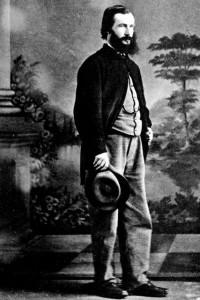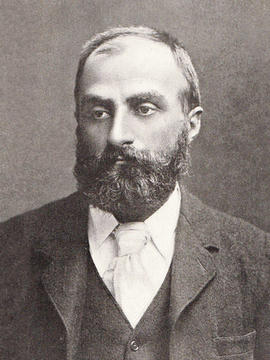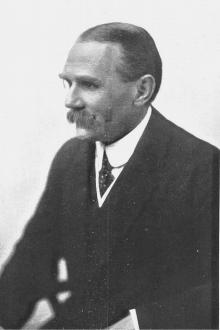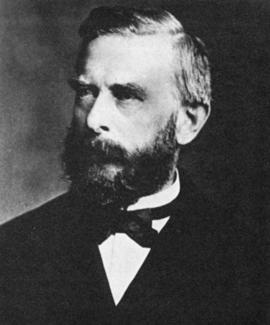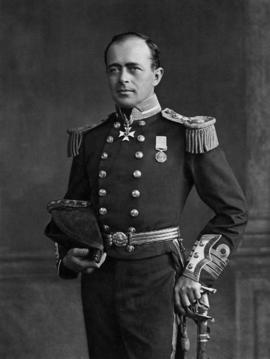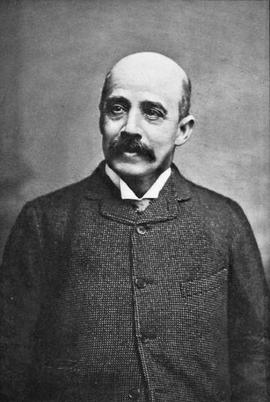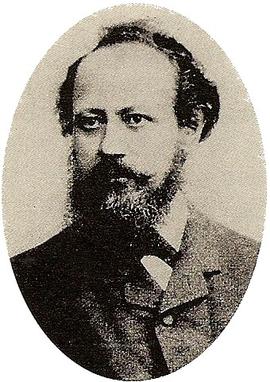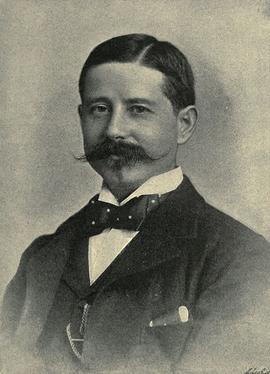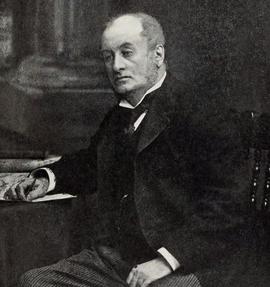Sir John Franklin was a British Royal Navy officer and Arctic explorer. After serving in wars against Napoleonic France and the United States, he led two expeditions into the Canadian Arctic and through the islands of the Arctic Archipelago, in 1819 and 1825, and served as Lieutenant-Governor of Van Diemen's Land from 1839 to 1843. During his third and final expedition, an attempt to transverse the Northwest Passage in 1845, Franklin's ships became icebound off King William Island in what is now Nunavut, where he died in June 1847
Robert Brown was a British scientist, explorer and author. He was a lecturer on geology, botany and zoology in Edinburgh and Glasgow, and was a member of many learned societies in England, American and on the Continent
William Spiers Bruce was a British naturalist, polar scientist and oceanographer who organised and led the Scottish National Antarctic Expedition to the South Orkney Islands and the Weddell Sea
Sir Frederick John Jackson was an English administrator, explorer and ornithologist. Jackson joined the British Ornithologists' Union in 1888. That year a paper by Jackson and Captain Shelley was published describing birds collected during his 1884-1886 trip to Africa. He collected many specimens in an 1898-1891 expedition to Uganda, and descriptions of this collection were published in a five-part paper in the Ibis in 1891-1892. Other papers described new species appeared in the Ibis and other journals between 1890 and 1917. Jackson was elected President of the East Africa and Uganda Natural History Society in 1910. He wrote nine of the nineteen chapters of Big Game Shooting, published in 1894. After retiring he worked on a complete history of the Birds of East Africa and Uganda, which was unpublished when he died in 1929, following pneumonia. The Birds of Kenya Colony and the Uganda Protectorate was completed by William Lutley Sclater
Wilhelm Karl Hartwich (or Hartwig) Peters was a German naturalist and explorer. He was assistant to the anatomist Johannes Peter Müller and later became curator of the Berlin Zoological Museum. Encouraged by Müller and the explorer Alexander von Humboldt, Peters travelled to Mozambique via Angola in September 1842, exploring the coastal region and the Zambesi River. He returned to Berlin with an enormous collection of natural history specimens, which he then described in Naturwissenschaftliche Reise nach Mossambique... in den Jahren 1842 bis 1848 ausgeführt (1852–1882). He replaced Martin Lichtenstein as curator of the museum in 1858, and in the same year he was elected a foreign member of the Royal Swedish Academy of Sciences. In a few years, he greatly increased the Berlin Museum's herpetological collection to a size comparable to those of Paris and London. Herpetology was Peters' main interest, and he described 122 new genera and 649 species from around the world
Captain Robert Falcon Scott was a Royal Navy officer and explorer who led two expeditions to the Antarctic regions: the Discovery expedition of 1901-1904 and the Terra Nova expedition of 1910-1913
Paul Belloni Du Chaillu was a French-American traveller, zoologist and anthropologist. He became famous in the 1860s as the first modern European to confirm the existence of gorillas
Christian Anton Goering was a German naturalist, painter and graphic artist who spent several years in Venezuela. He learned taxidermy from his father, who was a member of several ornithological societies. It was at a meeting of one of these societies that he met Christian Ludwig Brehm who helped him obtain a position at the Ornithological Museum of the University of Halle, where he worked under the direction of Hermann Burmeister. From 1856 to 1858, they travelled in South America and he decided to pursue his interests in natural history. He also went to London, where he took lessons from the zoological artist Joseph Wolf. While he was there, the Secretary of the Zoological Society, Philip Lutley Sclater, asked him to go to Venezuela to collect specimens for the British Museum
Sir Henry Hamilton Johnston was a British explorer, botanist, artist, colonial administrator and linguist who travelled widely in Africa. He published 40 books on African subjects and was one of key players in the Scramble for Africa that occurred at the end of the 19th century
Sir Clements Robert Markham was an English geographer, explorer and writer. He was secretary of the Royal Geographical Society between 1863 and 1888, and later served as the Society's president for a further 12 years. In the latter capacity he was mainly responsible for organising the British National Antarctic Expedition of 1901-1904, and for launching the polar career of Robert Falcon Scott

